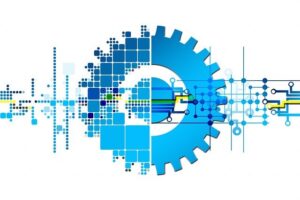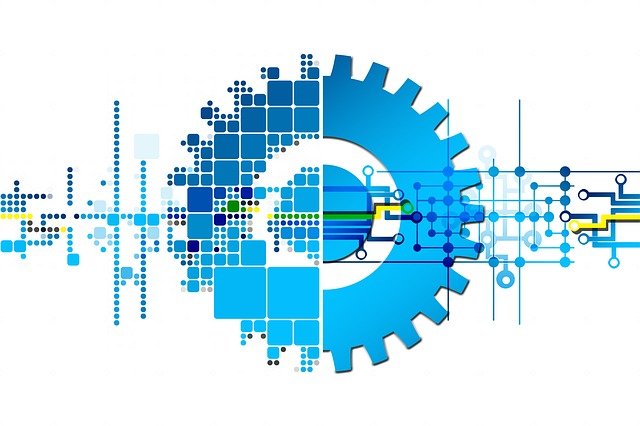Digital Transformation
 Today I’m going to share some digital transformation concepts with you.
Today I’m going to share some digital transformation concepts with you.
Let’s start with my favorite questions: ‘Why?’ and ‘Why do you care?’
‘Why’ is because we are in the middle of a disruptive event. This disruptive event will certainly remake the way businesses operate and will likely change many other things that will impact us all.
‘The why do you care’ is that impact. Because in one way or another this disruptive process is going to impact you. As a public service I’m going to walk through it and simplify. Hopefully this will be helpful to understand the changes when you see them, for your prosperity, or at least your sanity.
I will attempt to give you context.
Let’s dive right in. What do people mean by ‘digital transformation’? It is a combination of forces and emerging technologies that are converging, right now, to cause a disruptive shift in business and society.
‘The 4th Industrial Revolution’ is a related term. (I see this phrase used more internationally.) For our purposes Digital Transformation and 4th Industrial Revolution mean the same thing.
It is a convergence of forces and technologies that is causing and will cause a disruptive shift in business and society.
I’ll get to the technologies, but let’s first start with the concept of evolution vs. revolution.
Evolution is a process whereby things slowly adapt over time. Famously introduced by Darwin in the 1800’s with his trips to the Galapagos. He was able to theorize that the specific adaptions in finches were due to specific environmental pressures over time.
For this conversation the important point is that evolution is a slow and relatively stable process of adaptation.
Revolution or ‘transformation’, by contrast, is an abrupt change.
In the natural world the examples cited are the extinction episodes throughout history. These events, like the 15Km across Chicxulub asteroid that whacked into the Yucatan 66 million years ago and put the dinos out of business, create massive change – or disruption.
This massive change not only creates massive destruction but also creates opportunity. In our asteroid example there was a certain cohort of furry, warm-blooded, rat-like creatures hiding in the bushes that did really well once the dinosaurs were gone.
What you see when you look at history, either on the epoch scale or the shorter human scale, is not a straight line. What actually happens is intermittent periods of stability or evolution, separated by constant disruption events that reset everything.
That’s the difference between evolution and revolution. The trick is that you cannot predict when disruptive events are going to happen. If you could, they wouldn’t be disruptive.
In the business world, revolution happens when a new innovation disrupts that period of stability. The examples of course are the industrial revolutions. First steam, second electricity, third digital and now this fourth industrial revolution – or Digital transformation.
There you go – that’s your baseline.
What are the innovations that the prognosticators are claiming are/will precipitate this next digital transformation?
I’m glad you asked.
There are four technologies. These four and the interplay between them is what we are here to talk about today.
Ready?
Excited?
Edge pf your seat?
Drum roll…
Number one…
The internet of things or IoT
Number two…
Big Data
Number three…
The cloud
And number four…
Artificial intelligence, specifically machine learning.
Hold onto your hats. We are going to breeze through these and contextualize why the pundits think these technologies are going to disrupt.
First, holding the prize for the most non-sexy moniker of a technological innovation ever is “the internet of things”.
What is this? Think of IoT as all those smart devices that are connected to the internet. There are billions of them. The smart speaker in you house, the chips in your car, your phone, the cameras everywhere, the sensors in everything and everywhere.
In the last couple decades these sensors have gotten smarter and have been engineered into everything.
Why do we care and how does it create a revolution?
The answer is that as these billions of devices phone home they create billions of bits of data about everything. All this data from all your houses, cars, phones, machines and sensors is being collected at an exponential rate.
And that creates a problem, and an opportunity…
This opportunity is known as Big Data. At the same time these billions of IoT devices got connected and started phoning home our ability to collect and store large amounts of data evolved. We have the ability to collect all this data, store it and rapidly convert and consume it.
This data is something we have never before had access to. Why? Because we didn’t have the compute power to deal with data at this scale. It was too big for the tools we had and we had no place to store it.
But, now we do have a place to store this big data.
It’s called the cloud.
The cloud is simply a bunch of hardware sitting in giant data centers and connected to the internet. With that giant pool of hardware you get two enabling things. First unlimited is unlimited storage. Second is unlimited compute power. Simply put, with the cloud, problems that used to be too big are no longer too big because we can throw unlimited fast computing at them.
Here we are. We’ve got billions of little devices collecting big buckets of contextual data about everything and pumping them into a cloud computing environment that has unlimited capacity to work with that data.
So now what?
Now, we get the secret sauce.
Artificial intelligence, or more specifically Machine Learning.
Simply put there is a class of algorithms that were designed to derive insights and knowledge from big data sets. We couldn’t use them before now because a) we didn’t have the data and b) we didn’t have the compute power.
Now we do.
Think of machine learning as pattern matching. In the same way you might look at a painting and say “Hey there’s a mouse hidden behind that tree and it’s blue!” Think about the complexity of what went on in your brain to get to that insight. You have to know about mouses and colors and hiding and paintings and trees…
The learning part of machine learning is that we can teach these algorithms to do things by giving them ‘training data’ and telling them what to look for.
You might say, ‘that doesn’t’ sound very useful’, but whereas we can study one painting the machine algorithms can study billions of paintings for hidden mouses and they can do it quickly.
The combination of the data and the new classes of algorithms means that we can predict things we could not before. We can get down to a level of specificity that we could never before. we can solve problems that we couldn’t solve before.
And here is the part you should pay attention to:
We have machine code that can do the same thing as human professionals, do it better, do it faster and do it at scale.
I’m talking to all you well educated, highly paid, white-collar professionals. The reason you care about the digital revolution is that it is going to automate much of what we do.
And that, my friends, is why the business pundits are all-a-flutter about digital transformation.
Because, for 99.99% of the companies in the world the largest expense and the largest risk is humans.
Companies will embrace this revolution because if they don’t, others will, and those that don’t will end up, as they say on the BBC, in the dust-bin of history.
…

